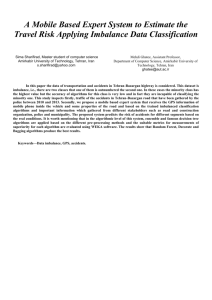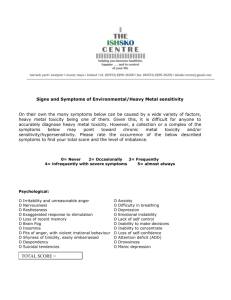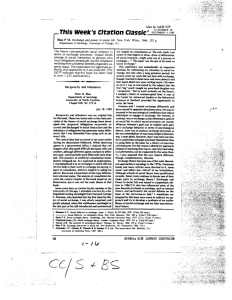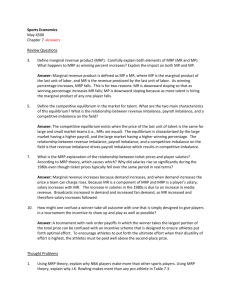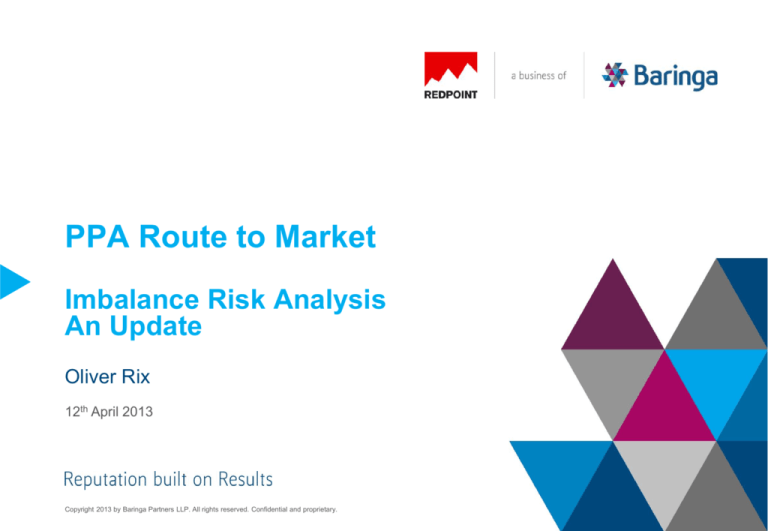
PPA Route to Market
Imbalance Risk Analysis
An Update
Oliver Rix
12th April 2013
Copyright 2013 by Baringa Partners LLP. All rights reserved. Confidential and proprietary.
Imbalance Risk Analysis
Agenda
Introduction
Outline Methodology
Historic Imbalance Prices
Modelling of Probabilistic Distributions
Future Imbalance Cost and Risk (On-Going Analysis)
Questions
Copyright 2013 by Baringa Partners LLP. All rights reserved. Confidential and proprietary.
Imbalance Risk Analysis
Introduction
Project Introduction
In response to recent evidence that independent generators are finding it increasingly difficult to secure commercially
viable power purchase agreements (PPAs), the Department of Energy and Climate Change (DECC) issued an open
call for evidence to the industry in April 2012.
Analysis Goal
This analysis supports the qualitative findings from the call for evidence responses and looks to quantify the present
and future risk associated with imbalance costs and the materiality of this for generation projects.
Analysis Rational
An empirical data set of historic generation volumes and cash-out prices is used to build probabilistic distributions of
the key variables for different asset types to enable simulation of imbalance costs. Appropriate sensitivities can then
be applied to assess potential future imbalance cost and risk.
Analysis Outputs
An insight into historical imbalance costs
A modelled imbalance risk for different generation types based on historic data
Future potential imbalance risks and costs for different generation types
Copyright 2013 by Baringa Partners LLP. All rights reserved. Confidential and proprietary.
Imbalance Risk Analysis
Context
GB balancing arrangements recap
Market participants buying and selling physical power are responsible for their own balancing on a half-hourly
basis.
To the extent that a participant’s net position based on generated volumes, customer demand and wholesale
purchases and sales is not zero, this is treated as an imbalance and settled against ‘cash-out’ prices.
The cash-out price that is applied to the imbalance depends on the direction of the imbalance relative to the
overall system imbalance: where the imbalance ‘helps’ at the system level, a market-related price is applied,
whereas if the imbalance exacerbates the overall system position, a price is applied reflecting the System
Operator cost of balancing (“System Buy Price” or “System Sell Price”).
SBP/SSPs can be at a significant and volatile premium/discount to the underlying wholesale price.
GRAPH –
sample time
series of
MIP/SBP/SSP
Copyright 2013 by Baringa Partners LLP. All rights reserved. Confidential and proprietary.
System
long
System
short
Participant
long
SSP
MIP
Participant
short
MIP
SBP
Imbalance Risk Analysis
Wind asset assessment
Historic data set
The actual imbalance accruing to participants will be a function of their portfolio and trading strategy.
We are aiming to isolate the element of imbalance that can be attributed to uncertainty in relation to the level of
outturn generation from an asset.
We have used public domain data for transmission-connected assets (BM Units).
Final Physical Notifications (FPNs) represent the information on expected output provided by generators to the
System Operator at gate closure, 1 hour ahead of delivery – we use these as our proxy for the forecast
information.
We compare this to Metered Output, and treat the difference as a ‘forecast imbalance’.
We then calculate an imbalance cost by applying the appropriate cash-out price for that half-hour (depending on
the relative direction of the forecast imbalance.
Copyright 2013 by Baringa Partners LLP. All rights reserved. Confidential and proprietary.
Imbalance Risk Analysis
Definitions
Imbalance Cost
𝑀𝑉 − 𝐹𝑃𝑁 . 𝐶𝑎𝑠ℎ 𝑂𝑢𝑡 𝑃𝑟𝑖𝑐𝑒 − 𝑀𝐼𝑃
𝑀𝑉
MV = Metered Volume (MWh)
FPN = Final Physical Notification (MWh)
MIP = Market Index Price (£/MWh)
Imbalance Risk
We define imbalance risk as the potential for
increased costs associated with uncertainty around
the expected level of imbalance cost
We propose to quantify this using a simulation model
to derive a probability distribution and define a metric
based on the difference between the mean (expected)
and a 95th percentile worst case
Copyright 2013 by Baringa Partners LLP. All rights reserved. Confidential and proprietary.
ILLUSTRATIVE
Imbalance Risk Analysis
Outline Methodology
Model Historic Imbalance
Price and Risk
• Calculate the Probabilistic
distributions for our characteristic
assets’ generation volume and cost
variables
• Use our characteristic generation
assets and modelled distributions to
calculate historic imbalance risk and
associated cost
• Found from empirical data sources
• Check model sensitivities and
calibration for different asset types
and sizes
• For each asset type
Output
Outline Methodology
Stage
Define our Characteristic
Generation Assets
Wind Forecasting Insights
Historic System Imbalance
Price and Risk
• Investigate collated data for trends
in imbalance prices and volumes
• Modelled historic imbalance
volumes and prices
• Investigate patterns in FPNs and
how to treat these in the modelled
distributions
• Identify trends in asset sizes,
types, generators
Copyright 2013 by Baringa Partners LLP. All rights reserved. Confidential and proprietary.
Model Future Imbalance
Price and Risk
• Develop changes to distributions
representing potential:
-
Evolution of balancing
arrangements
-
Changing supply/demand
fundamentals
Future System Imbalance
Price and Risk
• Modelled future imbalance volumes
and prices for different scenarios
and time horizons
Imbalance Risk Analysis
Historic Imbalance Prices
Wind forecasting insights
–
Imbalance costs vary between generators and asset sizes
–
Smaller assets tend to accrue larger imbalance costs
–
Patterns of FPNs relative to metered output suggests
different strategies for managing forecast uncertainty
Weighted Historic Imbalance Prices and costs - 2012
By Generator
Possibly remove this graph – difficult to
explain!
70
Average Prices (£/MWh)
65
60
55
50
45
40
35
30
6
Effective Imbalance Cost (£/ Output MWh)
75
By Wind Asset Type and Output
To Add: Other years
5
4
3
2
1
0
0
200
400
600
Annual Energy Output (MWh)
V-W-SBP
I-W-SBP
V-W-MIP
I-W-MIP
V-W-SSP
I-W-SSP
Onshore
Offshore
To Add: Show as % of annual revenue
Copyright 2013 by Baringa Partners LLP. All rights reserved. Confidential and proprietary.
800
Thousands
Imbalance Risk Analysis
Probabilistic Methodology
Develop Characteristic Generation Assets
–
For different asset types the model defines probabilistic
distributions of the asset FPN, NIV and Metered Output (MO)
values
Model Inputs
Empirical
Database
Probabilistic Model
Refine Model
Parameters
e.g. Final Physical
Notification (FPN),
Metered Volume
(MV), Net
Imbalance
Volume (NIV)
Calculate Metered
Volumes
Calculate Implied
Imbalance Price
These are developed from a sample of empirical data
with distributions calculated for ½ hourly periods, for 6
double month groups over a year
Modelled Distributions
Modelled Historic
Distributions
Inputs to
Future
Imbalance Cost
Model
Simulate for different
imbalance price scenarios
Cash Out
Prices
Probabilistic
Distributions
Parameter
Sensitivities
Historic
Imbalance Cost
and Risk
–
e.g. Cash out agreements,
Changing characteristic
generation asset
fundamentals
For WE, WD, different
generation types, optimal
trading strategy
Copyright 2013 by Baringa Partners LLP. All rights reserved. Confidential and proprietary.
MODELLED HISTORIC
IMBALANCE COST AND RISK
Imbalance Risk Analysis
Probabilistic Distributions for Different
Asset Types - historic
Onshore Wind
Mean Imbalance Price:
Offshore Wind
£2.14 /MWh
Mean Imbalance Price:
ILLUSTRATIVE – TO BE UPDATED
WILL STATE ASSUMPTIONS AROUND
STRATEGY ETC
Copyright 2013 by Baringa Partners LLP. All rights reserved. Confidential and proprietary.
£1.4 /MWh
Imbalance Risk Analysis
Probabilistic Distributions for Different
Asset Types - future
Onshore Wind
Mean Imbalance Price:
Offshore Wind
£2.14 /MWh
Mean Imbalance Price:
REPLACE WITH SENSITIVITIES STRESSING
DISTIBUTIONS OF IMBALANCE PRICES
Copyright 2013 by Baringa Partners LLP. All rights reserved. Confidential and proprietary.
£1.4 /MWh
Imbalance Risk Analysis
Questions?
Copyright 2013 by Baringa Partners LLP. All rights reserved. Confidential and proprietary.

